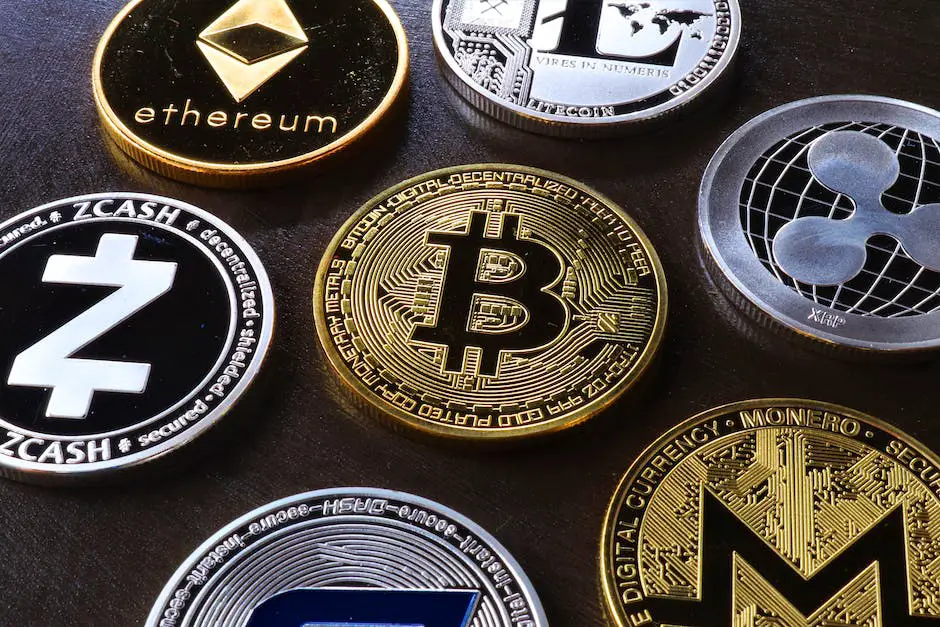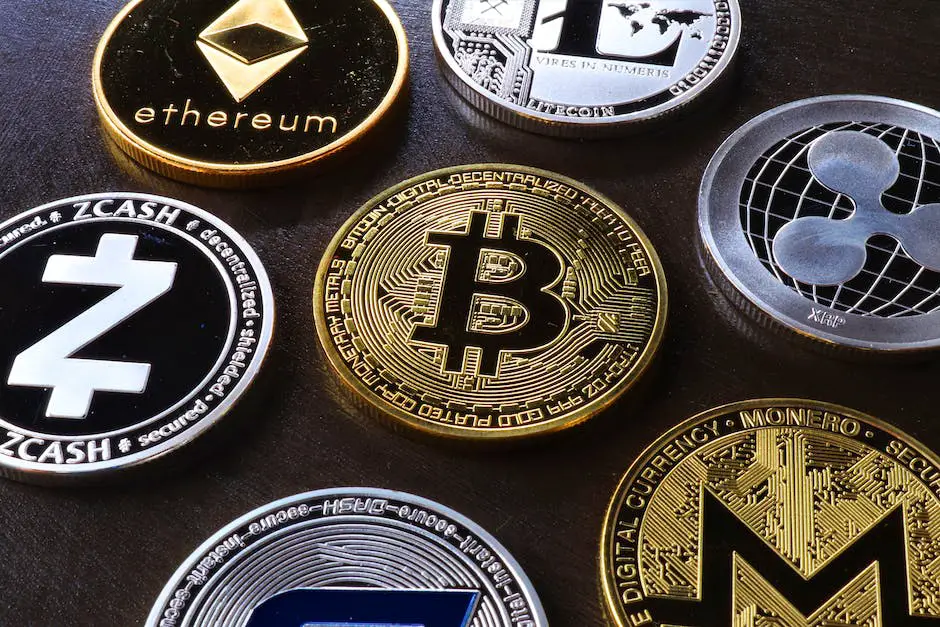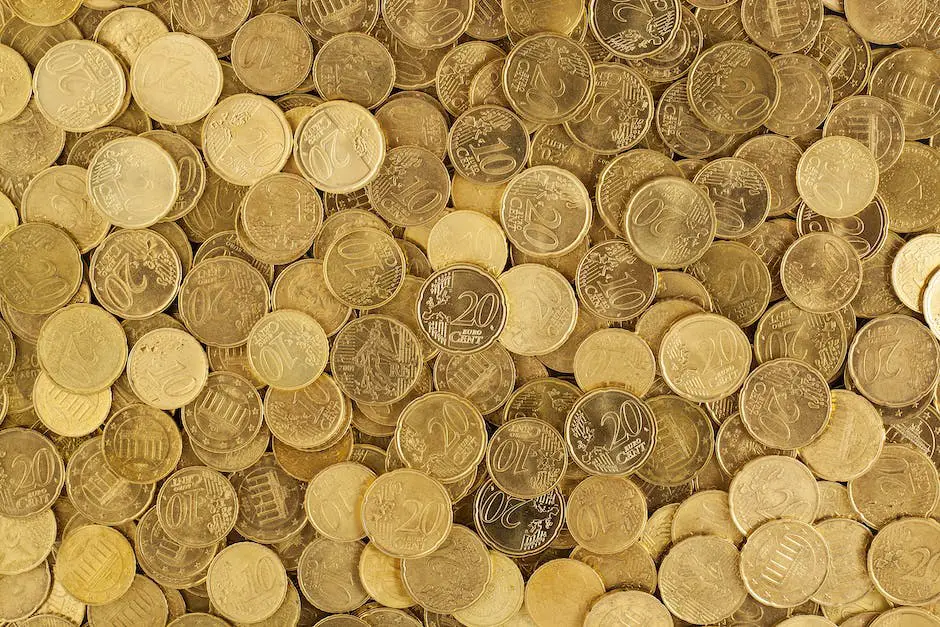A Beginner’s Guide to Cryptocurrency
In today’s rapidly evolving technological landscape, the concept of digital currency — or cryptocurrency — has grown to become an increasingly popular topic, capturing the attention of the general public, investors, and tech enthusiasts alike. As the world shifts towards a more digitized economy, having a foundational understanding of cryptocurrencies, their underlying technologies, and their potential impact in various facets of modern life is essential. This article serves as a comprehensive guide to cryptocurrency, delving into its origins, popular currencies in the market, the process of buying, storing, and using digital currencies, the risks and regulations surrounding them, and the possible future of this digital financial innovation.
Understanding Cryptocurrency
Introduction
Cryptocurrency has become a popular term in recent years, with digital currencies like Bitcoin, Ethereum, and Ripple gaining significant attention in mainstream media and financial markets worldwide. Nonetheless, many people are still unfamiliar with the concept and how these digital currencies operate. In this article, we will discuss the origins of cryptocurrency, explain the concept of digital money, and explore the technology behind it, primarily blockchain.
What is Cryptocurrency?
A cryptocurrency is a digital or virtual form of currency that utilizes cryptography to ensure secure transactions, control the creation of new units, and verify the transfer of assets. Unlike traditional currencies issued by central banks and governments, cryptocurrencies often work on a decentralized model, operating on a large network of computers called nodes. This decentralization offers numerous benefits, including increased security, privacy, and reduced transaction costs.
Bitcoin was the first cryptocurrency and remains the most well-known and widely used. It was introduced in 2009 by an anonymous individual or group known as Satoshi Nakamoto. Since then, thousands of other cryptocurrencies, often referred to as altcoins (alternative coins), have been developed, each with its unique features and purposes.
Digital Money
Cryptocurrencies are digital money, which means they exist only in electronic form and do not have a physical counterpart like coins or bills. Transactions are made through a public ledger called a blockchain, where individuals can send and receive digital assets without the need for intermediaries like banks.
One crucial aspect of cryptocurrencies is that they are divisible into smaller units, known as Satoshis in the case of Bitcoin. This divisibility allows users to make transactions of varying sizes depending on their requirements, offering increased flexibility compared to traditional currencies.
Blockchain Technology
Blockchain technology is the underlying framework that supports the functioning of cryptocurrencies. It is a decentralized digital ledger that records transactions chronologically and publicly, making it virtually tamper-proof.
The blockchain consists of a series of interconnected blocks, each containing a group of recent transactions. These blocks are linked together through complex mathematical computations, making it incredibly difficult to alter any information in the ledger.
One of the main benefits of blockchain technology is its high level of security. As transactions are encrypted and verified by multiple nodes on the network, the risk of fraudulent activities is significantly reduced. Moreover, blockchain technology enables greater transparency and traceability, allowing for a more trustless system in which parties can engage in transactions without the need for third-party intermediaries.
Reasons for Cryptocurrency Creation
- Financial freedom: Traditional financial systems can be restrictive due to regulations, high transaction fees, limited accessibility, and the influence of middlemen. Cryptocurrencies provide an alternative that promotes financial inclusion and allows for more control over one’s assets.
- Decentralization: Blockchain-based cryptocurrencies eliminate the need for central authorities, such as banks and governments, that can control and manipulate traditional currencies. Decentralization reduces the risk of centralized power and places control back in the hands of users.
- Privacy: Transactions made with cryptocurrencies often offer a higher level of privacy compared to traditional payment methods. While transactions are still recorded on the blockchain, personal information is not directly linked to the assets being exchanged.
- Security: With the use of cryptography and a decentralized network, cryptocurrencies provide increased security compared to traditional financial systems. Fraudulent activities become more complicated due to the stringent authentication process that blockchain technology provides.
Closing
As a rapidly growing field, cryptocurrency continually revolutionizes the world of finance by offering innovative ways to conduct transactions and manage assets. Blockchain, the technology behind cryptocurrencies, holds the potential to disrupt the traditional financial system, paving the way for a more decentralized and secure global economy. With mainstream adoption of cryptocurrencies on the rise, it is essential for individual users and businesses to understand the fundamental concepts and benefits of this groundbreaking technology.

Popular Cryptocurrencies
The world of cryptocurrencies
Expanding exponentially over the past decade, the world of cryptocurrencies includes numerous digital assets that serve as viable alternatives to traditional money. The value and market share of these digital coins constantly fluctuate, as does the technology that underpins them. This article explores some of the most popular cryptocurrencies currently on the market, such as Bitcoin, Ethereum, Ripple, and Litecoin. Additionally, we will consider the unique technologies and features that differentiate these currencies, and provide an overview of their history and key aspects that contribute to their popularity and market value.
Bitcoin
The first and still by far the most well-known cryptocurrency, Bitcoin, was created in 2008 by an individual or group using the pseudonym Satoshi Nakamoto. Bitcoin uses blockchain technology, a decentralized, public ledger on which all transactions are recorded and verified by a network of computers called nodes. Bitcoin’s main selling points include its limited supply (capped at 21 million coins), pseudonymous transactions, and global accessibility. It has faced well-publicized challenges revolving around scalability, transaction fees, and energy consumption, but remains the dominant player in the cryptocurrency market and a major determinant of other cryptocurrencies’ value.
Ethereum
Ethereum, launched in 2015 by programmer Vitalik Buterin, is not only a cryptocurrency but also a decentralized platform that allows developers to create and deploy smart contracts and decentralized applications (DApps). Its native currency, Ether (ETH), is utilized as “gas” that powers these smart contracts and DApps, as well as facilitates transactions on the Ethereum network. Ethereum’s innovative technology has attracted a wide range of applications, from initial coin offerings (ICOs) to decentralized finance (DeFi) systems. Although facing some competition from alternative smart contract platforms, Ethereum remains a popular choice for developers and holds the second-largest market share among cryptocurrencies.
Ripple
Ripple, also known as XRP, was developed in 2012 by the company Ripple Labs, with the goal of facilitating fast, low-cost cross-border transactions. Unlike Bitcoin and Ethereum, Ripple does not rely on blockchain technology; instead, it utilizes a distributed ledger called the XRP Ledger. While transactions are still validated by a network of nodes, Ripple’s consensus mechanism is different and requires only a subset of nodes known as “validators” to approve transactions to maintain security and efficiency. Ripple has experienced significant adoption among banks and financial institutions seeking to increase the speed and lower the cost of international transactions, although it is not technically a decentralized, trustless system like Bitcoin and Ethereum.
Litecoin
Litecoin, created by former Google engineer Charlie Lee in 2011, is often considered the “silver” to Bitcoin’s “gold.” It shares many similarities with Bitcoin, primarily in its use of blockchain technology and pseudonymous transactions. However, Litecoin boasts a few key differences: notably, faster transaction confirmation times and lower fees. Litecoin’s mining algorithm, Scrypt, was designed to allow for more efficient mining and greater decentralization than Bitcoin’s algorithm, SHA-256. While it may not have experienced the same explosive growth as some of its counterparts, Litecoin remains a popular and widely accepted cryptocurrency due to its strong performance and established reputation.
Introduction to Cryptocurrencies
In recent years, cryptocurrencies such as Bitcoin, Ethereum, Ripple, and Litecoin have gained significant global attention as an alternative form of currency with numerous advantages like decentralization, security, and potential investment rewards. As the cryptocurrency landscape continues to evolve, it becomes increasingly imperative for individuals and institutions to stay informed and adapt accordingly, embracing the potential benefits and opportunities these groundbreaking technologies afford.
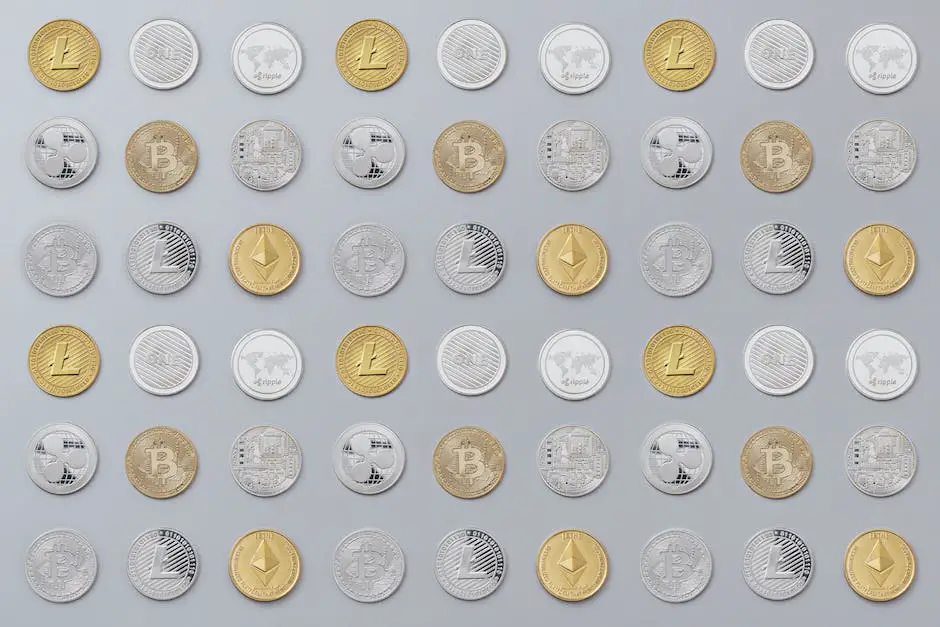
How to Buy, Store, and Use Cryptocurrency
A Beginner’s Guide to Cryptocurrencies
For those looking to enter the world of digital currencies, understanding the steps involved when it comes to buying, storing, and using cryptocurrencies is essential, as well as being aware of the risks and security measures that should be considered. This guide aims to connect beginners with the knowledge required to acquire and manage cryptocurrencies effectively and navigate the ever-changing landscape of digital assets.
Opening a Digital Wallet
The first step in buying and managing cryptocurrencies is setting up a digital wallet. A cryptocurrency wallet is a software program or hardware device that enables users to store, send, and receive digital currencies securely. There are various types of wallets available, such as software wallets, hardware wallets, and even paper wallets, with differing levels of security and user-friendliness.
- Software wallets can be installed on a computer or mobile device and include options like desktop wallets, mobile wallets, and browser-based web wallets. These wallets are generally easy to use and allow for quick transactions, but they may be less secure than other options as they could be vulnerable to hacking or malware.
- Hardware wallets, on the other hand, are physical devices that store cryptocurrencies offline, adding an extra layer of security against hacks. They are considered more secure but may be less convenient for frequent transactions as they require a connection to a computer or mobile device.
- Paper wallets are another form of offline storage, involving printing the private keys and addresses of cryptocurrency on physical paper and storing it in a secure location. While paper wallets offer a high level of security, they can be challenging to set up and maintain and may not be suitable for beginners.
Selecting an Exchange Platform
Once a wallet is set up, the next step is to acquire cryptocurrency through an exchange platform. There are numerous exchanges available, each with different levels of user-friendliness, security, and available cryptocurrencies. Some well-known exchange platforms include Coinbase, Binance, Kraken, and Bitstamp, among others.
When selecting an exchange, it is essential to consider factors such as the platform’s reputation, security measures, fees associated with trading, and the user interface. It is also crucial to ensure the exchange supports the type of cryptocurrency being purchased.
Purchasing Cryptocurrency
After selecting a suitable exchange, users can buy cryptocurrencies using traditional currency, often through credit/debit cards or bank transfers. It is essential to confirm the exchange’s associated fees and the user’s wallet address when making the purchase. Once the transaction is completed, the cryptocurrency will be sent to the user’s digital wallet.
Using Cryptocurrency
Cryptocurrencies can be used for various purposes, including online and offline purchases, trading, and investment opportunities. Many businesses accept cryptocurrencies as payment for goods and services, while others use them for peer-to-peer transactions or remittances. To make transactions, users need the recipient’s wallet address and the amount of cryptocurrency to be sent. Some wallets allow for QR code scanning, making transactions more accessible.
It is essential to note that cryptocurrency markets can be volatile, and prices may change rapidly. Therefore, it is crucial to stay informed about market trends and consider the potential risks, especially for those planning to invest in cryptocurrencies.
Introduction
As interest in cryptocurrencies grows, it’s important for the general public to become informed about this digital innovation. Cryptocurrencies are digital or virtual currencies that use cryptography for security, and they have gained increased popularity as investments in recent years. To make informed decisions regarding cryptocurrencies, it is crucial to understand the basics of digital wallets, exchange platforms, and transaction processing, all while staying up-to-date with security measures and market trends.
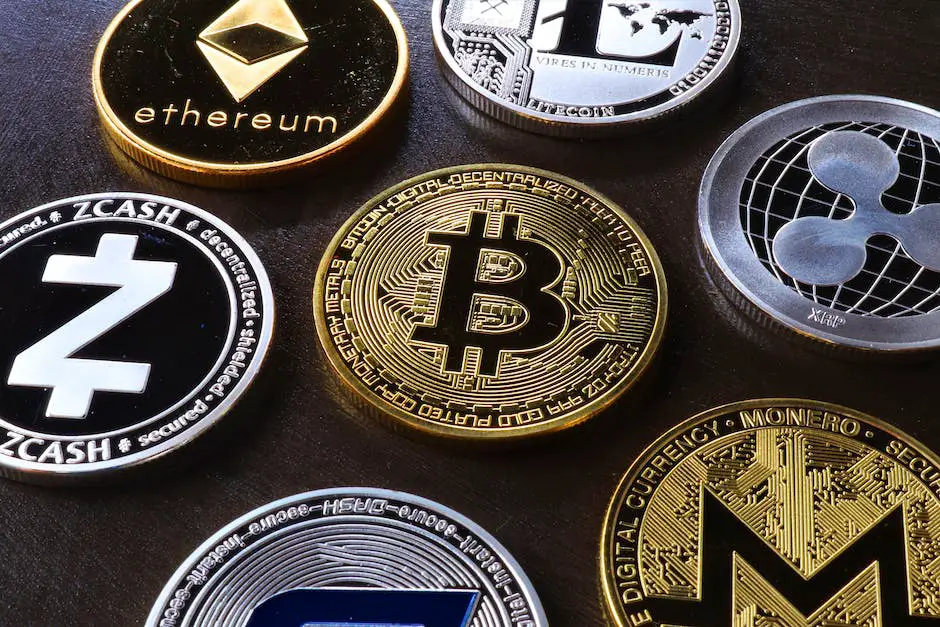
Risks and Regulations
Diving Deeper into Cryptocurrency
With increasing adoption by both individual and institutional investors, the value and market cap of cryptocurrencies have skyrocketed. However, investing in this relatively new form of currency also carries risks and challenges, as well as being subject to numerous regulations from governments and regulatory agencies. To succeed in the world of cryptocurrency, it is essential to research and select appropriate storage options, familiarize oneself with various platforms, and remain aware of potential risks and pitfalls that may come with such investments.
Market Volatility
One of the most significant risks associated with investing in cryptocurrency is market volatility. Prices of cryptocurrencies can fluctuate dramatically, even within the same day, exposing investors to potentially significant losses. This volatility can be attributed to factors such as speculative trading and limited liquidity, as well as periodic market panic triggered by news, rumors, or government actions. Investors should be prepared for potential sudden downturns in the value of their cryptocurrency holdings and should carefully consider the level of risk they are willing to assume.
Security Concerns
Security is another significant concern for cryptocurrency investors. Cyber criminals, hackers, and malware pose ongoing threats to the safety and integrity of digital assets held in online wallets, exchanges, and other platforms. Furthermore, because cryptocurrency transactions are generally irreversible, any loss of funds due to theft or fraud may be difficult, if not impossible, to recover. To mitigate these risks, investors should practice good security hygiene, such as using strong passwords, enabling two-factor authentication, and storing their private keys and passwords offline.
Scams and Fraud
As the cryptocurrency ecosystem has expanded, so too has the prevalence of scams and fraudulent schemes aimed at tricking unsuspecting investors into parting with their money. Examples of such scams include Ponzi schemes, pump and dump schemes, and fraudulent initial coin offerings (ICOs). To minimize the likelihood of falling victim to fraud, investors are advised to conduct thorough research, only invest in well-established projects with legitimate use cases, and avoid schemes that promise unrealistic returns or require recruitment of new members.
Regulatory Landscape
The regulatory framework surrounding cryptocurrencies is still evolving, as governments and regulatory agencies worldwide attempt to balance the need for consumer protection, market integrity, and financial stability with the desire to foster innovation. In some jurisdictions, cryptocurrencies are classified as commodities, while in others, they may be subject to securities or money transmission laws. This complex and fragmented regulatory landscape can create challenges for investors, who may be subject to varying requirements depending on their location and the nature of their activities.
Implications for Investors and the Crypto Market
The risks associated with cryptocurrency investing and the diverse regulatory landscape can have significant implications for both investors and the crypto market as a whole. Regulatory shifts can impact the price, liquidity, and overall attractiveness of a particular cryptocurrency or the market in general. Investors should be aware of the possibility of changing regulations, and should stay informed of any relevant updates or potential repercussions to their investments.
Understanding the Cryptocurrency Landscape
As cryptocurrencies continue to gain traction and popularity, it is essential for the general public to become informed on their potential benefits and risks. Investing in cryptocurrency offers opportunities for significant gains, but also involves challenges related to market volatility, security, and regulatory concerns. By thoroughly researching the cryptocurrency ecosystem, practicing good security hygiene, and staying informed about the evolving regulatory landscape, investors and users alike can make better-informed decisions and optimize their chances of success in this rapidly evolving market.

The Future of Cryptocurrency
The Impact of Cryptocurrencies on Global Finance
As more individuals and businesses turn to cryptocurrency-based transactions, it raises the question of how digital currencies might shape the future of global finance and the economy. The impact on existing financial systems is crucial to the development and widespread adoption of cryptocurrencies. A closer examination of how this shift might influence traditional payment methods, banking services, and the overarching financial sector is essential to fully understand the potential ramifications of the growing prevalence of these digital assets.
Potential Impact on Global Financial Systems
Decentralization is a key feature of cryptocurrencies, as it empowers individuals by giving them greater control over their money. This has the potential to challenge the dominance of central banks and other financial institutions. By providing an alternative to conventional methods of monetary exchange, cryptocurrencies may spur innovation in banking services and promote competition in the global financial industry. This, in turn, could drive improvements in accessibility, cost efficiency, and security.
In addition to the implications for established institutions, the future of cryptocurrency also hinges on advancements in its underlying technology – blockchain. This public digital ledger is fundamental to the operation of most cryptocurrencies, enabling secure, transparent, and immutable transactions. As blockchain technology matures, it could be employed in a myriad of applications beyond digital currencies, including supply chain management, digital identity systems, voting platforms, and even public sector services.
Cryptocurrency and Mainstream Adoption
The growth and potential of cryptocurrencies go hand in hand with their mainstream adoption by individuals, businesses, and governments. Widespread use of digital currencies can foster innovation in different industries as organizations find ways to harness cryptocurrencies and blockchain technology to solve problems, optimize operations, and enhance their services.
For example, cryptocurrencies have the ability to simplify cross-border transactions and remittances, as they can be transferred quickly and securely with minimal fees. This can have a significant impact on the global remittance market and facilitate commerce between countries. Additionally, the distributed ledger nature of blockchain technology offers transparency and tamper-proof record-keeping, which has the potential to revolutionize industries such as real estate, healthcare, and even the legal system.
Future Challenges and Obstacles
Despite the promising outlook for cryptocurrencies and their integration into various sectors, there are numerous challenges and barriers to their widespread adoption. One of the primary issues is the lack of regulatory clarity regarding digital currencies. Many countries are yet to establish clear guidelines, leading to uncertainty and potentially hindering investment in the technology.
Another concern is the scalability of cryptocurrencies, as the processing capacity of most blockchain networks is limited compared to traditional payment systems. The computational requirements for verifying transactions also contribute to high energy consumption, raising questions about the environmental impact of cryptocurrencies.
Last but not least, widespread adoption of cryptocurrencies depends on their ease of use and accessibility for everyday transactions. As long as digital currency wallets, exchange platforms, and payment methods remain difficult to use for non-experts, the average person is unlikely to make the switch from conventional currencies.
Conclusion
In conclusion, the future of cryptocurrency hinges on its potential to disrupt and reshape global financial systems, spur innovative applications of blockchain technology, and respond to the challenges of regulatory issues, scalability, and accessibility. If cryptocurrency can overcome these obstacles, it has the potential to significantly impact various industries, drive innovation, and ultimately, revolutionize the way we conduct transactions on a global scale.
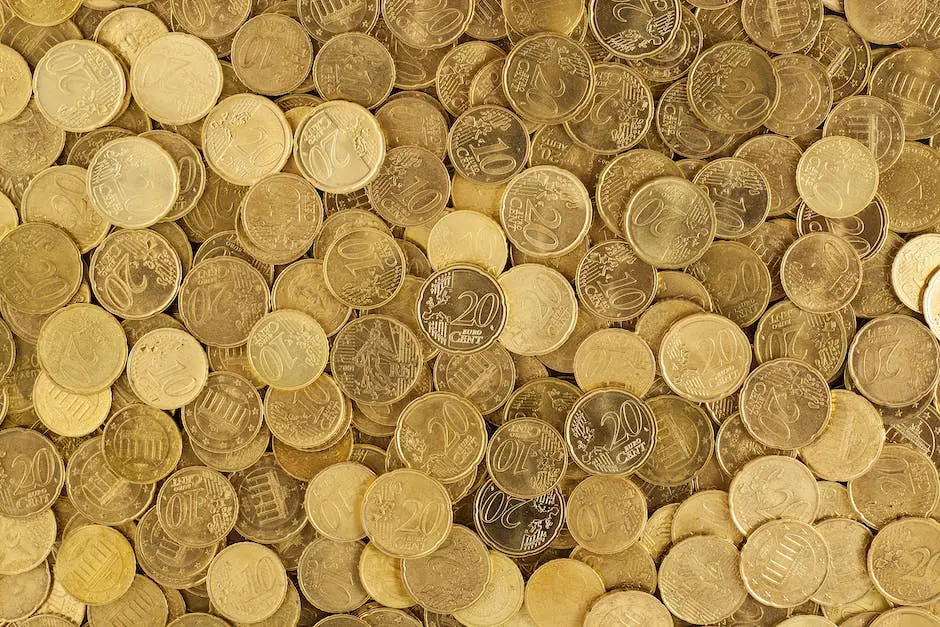
Undeniably, the world of cryptocurrency has come a long way since its inception, transforming from a niche, tech-savvy concept to an increasingly mainstream form of digital money that continues to reshape the global financial landscape. Although the journey ahead is fraught with challenges, risks, and uncertainties, the potential for cryptocurrency and blockchain technology to revolutionize industries and redefine the way people transact and invest is immense. As individuals continue to become more informed on this cutting-edge technology and its possibilities, the growth and adoption of cryptocurrencies will likely contribute to a more innovative and digitally-focused financial future.

